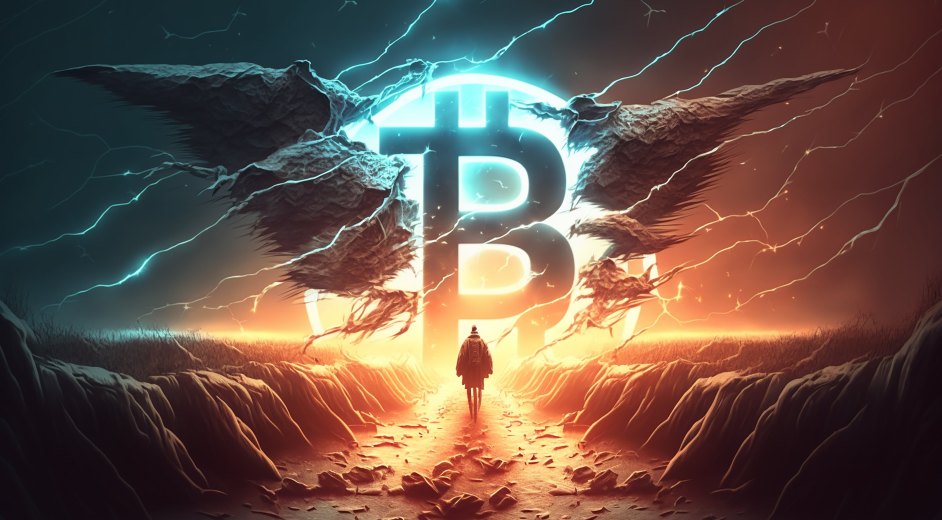Bitcoin Spark: Is it the new Ethereum in the making?

Bitcoin, while undeniably the world’s most popular cryptocurrency, does face some technical and economic limitations that we must acknowledge and work to overcome. The issue of scalability can result in frustrating transaction delays and exorbitant fees during peak usage, hindering the seamless experience we envision.
Moreover, the energy-intensive mining process has raised valid concerns about its ecological footprint, urging us to explore more sustainable alternatives. The risk of centralization looms, as mining power concentrates in a few hands, potentially undermining the decentralized ethos we champion. Addressing privacy concerns, ensuring transaction reversibility, and navigating price volatility is crucial to unlocking its full potential as a practical currency. That’s why a group of engineers decided to launch a new cryptocurrency called Bitcoin Spark to address Bitcoin’s shortcomings.
Bitcoin Spark, much like its namesake, is a new player in the vast digital currency field, poised to invigorate the crypto market with innovation, secure blockchain, and high return potential. Unlike Bitcoin’s history, Spark’s future remains open, valued at a point reminiscent of Bitcoin’s initial days.
In recent months, Bitcoin Spark has rapidly been gaining traction in the crypto domain, challenging the dominance of established cryptocurrencies like Ethereum. This article explores the intricacies of Bitcoin Spark, its comparison with Ethereum, and the reasons behind its rising prominence. To fully understand how Bitcoin Spark is going to revolutionize the cryptocurrency market, we first need to look at the second most popular cryptocurrency, Ethereum.
Ethereum: A Brief Overview
Ethereum has long been a major player in the crypto world, known for its versatility and the unique functionalities it offers. It extends the blockchain applications beyond just cryptocurrency, enabling developers to build and deploy decentralized applications (dApps) powered by smart contracts. Ethereum’s native token, ETH, facilitates transactions within these smart contracts and acts as a security measure against inefficient code and malicious activities.
On the contrary, Bitcoin’s primary purpose has been as a digital currency and a store of value. Ethereum’s broad application scope and dynamic platform have attracted a significant number of investors who see it as a promising avenue for long-term growth.
Bitcoin Spark: A New Contender
Bitcoin Spark, or BTCS, is a novel cryptocurrency project aiming to improve upon the limitations of Bitcoin and, in some aspects, Ethereum. It uses a radical blockchain technology known as Proof-Of-Process (PoP), which is a hybrid of Proof-of-Work (PoW) and Proof-of-Stake (PoS) models. This unique consensus model enhances the transaction capacity and reduces transaction fees, making BTCS more efficient for everyday transactions.
Moreover, the Bitcoin Spark network includes a separate layer for smart contracts, which can use different programming languages. This layer reaches consensus on the main network but allows innovative dApps to be developed without causing transaction congestion.
Deciphering Proof-of-Process
The PoP model is a novel concept introduced by Bitcoin Spark. It combines the principles of PoW and PoS with a unique algorithm that restricts linear rewards based on stake size or raw processing power. This innovative approach prevents the concentration of power among large-scale miners.
BTCS mining requires an easy-to-use mining program that can be installed on any device. This program automatically limits the device’s processing power usage, thereby controlling the mining capability. The rewards for miners are proportional to the processing power they rent out to the network, fostering a fair distribution of BTCS tokens.
A New Era of Mining
Bitcoin Spark’s mining approach is a significant departure from traditional methods. Bitcoin’s PoW model involves solving complex mathematical problems using high-end computers, consuming a lot of energy. In contrast, Ethereum’s PoS model requires participants to lock a certain amount of ETH to earn validation rights.
Bitcoin Spark, with its PoP model, simplifies this process. It allows users to mine using any device, making mining more accessible and promoting decentralization. This method also ensures a fair distribution of BTCS tokens regardless of the size of the stake or the computing power of the mining device.
Rewarding Network Participants
Bitcoin Spark has devised innovative ways to reward network participants. The primary source of revenue comes from a decentralized CPU rental system. Users pay with BTCS tokens to access processing power, which then goes into the mining rewards pool.
The project also earns revenue from advertising. Half of the revenue from advertisements on the Bitcoin Spark application and website is distributed among network participants and miners. The community actively polices the advertising content, ensuring a clean and trustworthy platform.
Bitcoin Spark’s Tokenomics
Bitcoin Spark’s tokenomics closely mirror that of Bitcoin, with a maximum supply of 21 million tokens. However, the time to reach this maximum supply is significantly longer for BTCS, allowing for a prolonged period of mining rewards distribution.
During the ICO phase, BTCS was offered at $1.50, with an additional 20% bonus. This presented an excellent opportunity for investors to participate in the project’s growth.
The Future of Bitcoin Spark
Bitcoin Spark’s unique features and solutions look to stir interest among investors and crypto enthusiasts. Its potential for disrupting the crypto space makes it an intriguing project to watch.
While Ethereum continues to maintain its stronghold with its unique offerings, Bitcoin Spark is rapidly emerging as a strong contender. As both platforms continue to evolve, the competition for dominance in the crypto world is heating up.

